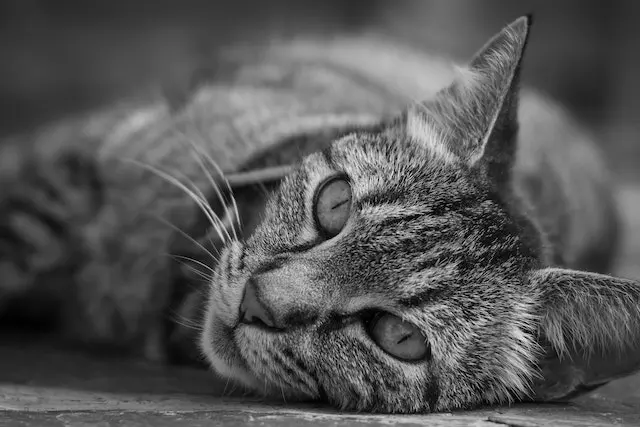Are Bengal Cats Hypoallergenic? Debunking the Myth
Bengal cats have gained considerable popularity in recent years, captivating pet lovers with their striking appearance and playful nature. As people consider welcoming these unique feline companions into their homes, one question often arises: Are Bengal cats hypoallergenic? In this article, we will delve into the world of Bengal cats and explore their hypoallergenic qualities, shedding light on the potential benefits they offer to individuals with allergies. By understanding the factors that contribute to hypoallergenic traits and examining the specific characteristics of Bengal cats, we can make an informed decision about their suitability for allergy sufferers.
Understanding Hypoallergenic Cats:
Before discussing the hypoallergenic qualities of Bengal cats, it is essential to grasp the concept of hypoallergenic pets. Contrary to popular belief, hypoallergenic does not mean completely allergen-free. Rather, hypoallergenic cats are those that produce fewer allergenic proteins, specifically a protein known as Fel d 1, which is responsible for triggering allergic reactions in sensitive individuals. While no cat breed is entirely free of Fel d 1, some breeds have been found to produce lower levels of this protein, potentially reducing allergic symptoms in susceptible individuals.
Bengal Cats and Allergenic Proteins:
Contrary to popular belief, Bengal cats are not hypoallergenic. They do produce Fel d 1 allergenic proteins, just like any other domestic cat. However, some allergy sufferers report milder reactions to Bengal cats compared to other breeds. This variation in allergic responses can be attributed to several factors, including the individual’s sensitivity, the level of exposure to allergens, and the cat’s grooming habits.
Grooming and Allergen Spread:
One reason behind the perceived hypoallergenic nature of Bengal cats is their grooming behavior. Bengal cats are known to be fastidious groomers, often licking their fur to maintain cleanliness. This regular self-grooming habit may lead to a reduction in the amount of allergenic proteins present on their fur. Consequently, some individuals with allergies may experience fewer symptoms or milder reactions when in contact with Bengal cats.
Tips for Living with Bengal Cats:
If you or someone in your household has allergies but still wishes to have a Bengal cat as a pet, there are measures you can take to mitigate allergic reactions. Regular grooming and brushing of your Bengal cat’s fur can help reduce the amount of allergens present. Additionally, keeping your home clean, using air purifiers, and maintaining good indoor air quality can contribute to minimizing allergy symptoms.
Allergy Management Tips:
Certainly! Here are some Bengal cat allergy management tips to help minimize allergen exposure and manage your allergies effectively:
1. Regular Grooming: Regularly groom your Bengal cat to reduce the amount of loose hair and dander in your home. Brushing their fur at least once a week can help remove allergens and prevent excessive shedding. Consider using a specialized pet brush designed to trap allergens effectively.
2. Clean Living Environment: Keep your living space clean to minimize the presence of allergens. Vacuum your carpets, rugs, and furniture regularly using a vacuum cleaner equipped with a HEPA filter. This will help remove allergens from the surfaces. Consider using washable covers for your furniture to make cleaning easier. Additionally, use air purifiers with HEPA filters to help eliminate airborne allergens.
3. Dusting and Cleaning: Dusting your home frequently is important, as allergens can settle on surfaces. Use damp cloths or electrostatic dusters to trap allergens instead of dispersing them into the air. Pay close attention to areas where your Bengal cat spends the most time, such as their favorite resting spots. Additionally, regularly clean curtains, blinds, and other fabric items that can trap allergens.

4. Wash Bedding and Fabrics: Wash your bedding, including sheets, pillowcases, and blankets, regularly in hot water to remove any allergens that may have accumulated. Consider using hypoallergenic bedding materials. Additionally, wash your curtains, cushion covers, and other fabric items that may harbor allergens.
5. Limit Bedroom Access: If your allergies are particularly severe, it’s a good idea to keep your Bengal cat out of your bedroom. This will create a designated allergen-free space where you can sleep and rest without exposure to allergens.
6. Personal Hygiene: After interacting with your Bengal cat, wash your hands thoroughly with soap and water to remove any allergens that may have transferred onto your skin. Avoid touching your face or eyes before washing your hands to minimize the risk of an allergic reaction.
7. Consider Allergy-Friendly Products: Use hypoallergenic cleaning products and laundry detergents that are free from strong fragrances and dyes. These products are less likely to trigger allergic reactions.
8. Consult an Allergist: If you’re considering getting a Bengal cat but have severe allergies, it’s advisable to consult an allergist. They can assess your sensitivity and provide personalized advice and treatment options to help manage your allergies effectively. They may recommend allergy shots or medications to alleviate symptoms.
Remember, while these tips can help minimize allergen exposure, they may not eliminate all allergic reactions. Each individual’s allergy sensitivity varies, so it’s essential to monitor your own reactions and seek medical advice if needed.
FAQs about Are Bengal Cats Hypoallergenic?
Are Bengal Cats Hypoallergenic?
Bengal cats are often considered to be hypoallergenic, but it’s important to note that no cat breed is completely allergen-free. While Bengal cats may produce fewer allergenic proteins than other breeds, individuals with allergies might still experience reactions.
The reduced shedding and unique coat texture of Bengal cats can help mitigate allergic symptoms for some people, making them a potential option for those with mild allergies.
What Makes Bengal Cats Less Allergenic?
Bengal cats have a distinct coat that lacks the traditional long guard hairs found in other breeds. This coat composition can lead to fewer allergenic proteins being released into the environment through shedding. Additionally, some Bengal cats produce fewer Fel d 1 proteins, which are a common source of cat allergies. However, individual sensitivity varies, and some allergic individuals might still react to Bengal cats.
Managing Allergies with Bengal Cats:
If you’re considering a Bengal cat to alleviate allergies, it’s essential to spend time with one before making a decision. Regular grooming and cleaning practices, such as frequent vacuuming and using air purifiers, can help minimize allergen exposure.
Consult with an allergist to assess your specific allergy triggers and discuss potential strategies for living comfortably with a cat. Keep in mind that while Bengal cats might be a better option for some allergy sufferers, no cat breed can guarantee a completely allergy-free experience.
Conclusion:
While Bengal cats are not hypoallergenic in the truest sense, their grooming habits may lead to reduced allergen spread and milder allergic reactions for some individuals. However, it’s crucial to understand that every person’s sensitivity to allergens varies. If you’re considering bringing a Bengal cat into your home but have allergies, it’s recommended to spend time with a Bengal cat beforehand to gauge your reaction. Additionally, adopting good hygiene practices and maintaining a clean living environment can help mitigate allergen exposure. Ultimately, making an informed decision based on your specific allergy situation is key when considering Bengal cats as pets.






One thought on “Are Bengal Cats Hypoallergenic? Debunking the Myth”
Comments are closed.